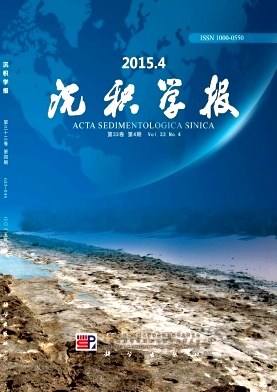The Charactoristics of Strontium and Neodynimu Isotope Geochemistry and Tectonic-depositional Setting of the Devonian Chert, Hunan-Guangxi Province
doi: 10.14027/j.cnki.cjxb.2015.04.006
- Received Date: 2014-06-25
- Rev Recd Date: 2014-10-27
- Publish Date: 2015-08-10
-
Key words:
- Devonian /
- bedded chert /
- Rb-Sr-Sm-Nd isotope systematics /
- depositional setting /
- basin evolution /
- hydrothermal activity
Abstract: During the Devonian, a complicated carbonate platform-basin configuration was created through transtensional rifting; extensive bedded chert, commonly interbedded with tuffaceous beds, occurred in the narrow, elongate interplatform basins (or troughs) in South China. In order to unravel the origin and distribution of the bedded chert successions, and their relationships to basement faulting activities during the opening of the Devonian South China Sea, geochemistry and Rb-Sr, Sm-Nd isotopic systematics are carried out upon the chert deposits. The initial (87Sr/86Sr)0 ratios of chert generally vary from 0.712 000 to 0.730 000, suggesting influences both from terrigenous influx and seawater. The Nd isotopic model ages (tDM or t2DM) and initial εNd(0) values of chert vary mostly from 1.5 to 2.1 Ga, and from -16 to -21, respectively, implying that the silica sources were derived from the provenances of the Palaeoproterozoic crust relics at depth. The high εNd(0) values of chert (-0.22 to 14.7) in some localities, mostly along the elongate troughs, suggest that silica sources may have been derived from deeper-seated mantle, being channeled through the interplate boundary fault zones extending downwards to the mantle.
| Citation: | WANG ZhuoZhuo, SHI LiZhi, ZHANG YongSheng, CHEN DaiZhao, LIANG JiangPing. The Charactoristics of Strontium and Neodynimu Isotope Geochemistry and Tectonic-depositional Setting of the Devonian Chert, Hunan-Guangxi Province[J]. Acta Sedimentologica Sinica, 2015, 33(4): 679-686. doi: 10.14027/j.cnki.cjxb.2015.04.006 |






 DownLoad:
DownLoad: